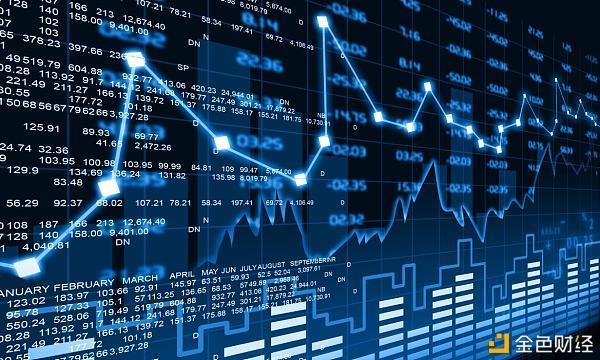Exchange Volume Manipulation Research: How to Estimate the False Trading Volume of Exchanges?
Written by: X-explore, Wu Says Blockchain
Since 2023, the trading volume of cryptocurrency exchanges has significantly increased. In January of this year, the derivatives trading volume of mainstream exchanges grew by 47.6% compared to the previous month. This soaring trading volume is likely, as the article suggests, mixed with false trading.
The issue of wash trading on cryptocurrency exchanges is not a new topic. Due to the lack of regulation in centralized exchanges, some exchanges tend to engage in false wash trading to obscure their real trading volume, thereby boosting their volume rankings. Therefore, we have developed a method for volume analysis to identify and elucidate false trading volume.
We obtained historical candlestick data, real-time depth data, and real-time trading data from several mainstream exchanges through open APIs. These exchanges include Binance, Bybit, OKX, Bitget, Phemex, Kucoin, and dYdX.
1. Overview of Trading Volume by Exchange
From the chart below, we can see that since 2023, the trading volume of cryptocurrency exchanges has significantly increased; however, the trading volume pattern of Phemex appears abnormal.
The chart below shows the price and trading volume of the uBTCUSD trading pair on Phemex. It is clear that starting from August 19, 2022, the trading volume rapidly increased, and from September 16, 2022, to November 19, 2022, this crazy trading volume reoccurred. Subsequently, without any signs, the trading volume sharply declined, bringing it back to levels seen before August 19, 2022. Starting in January 2023, the trading volume seems to have rebounded again and continues to maintain a higher level.
2. Study of Price-Volume Relationship
Generally, price fluctuations in the market lead to surges in trading volume, as investors close their trades or open new ones. Based on our experience, periodic spikes in trading volume often occur after significant price drops or increases, especially in the futures/derivatives market.
Considering that cryptocurrencies feature leveraged trading, any drastic movement in the market can be amplified, leading to stop-loss and take-profit actions. This will be an important reason for the surge in trading volume. Therefore, we have taken the changes in Phemex's trading volume during significant price fluctuations as one of our investigation targets.
Our analysis of the (Pearson) correlation coefficients of mainstream exchanges indicates that dydx's correlation coefficient exhibits periodicity associated with trading mining reward activities. Binance, Bitget, OKX, and Bybit show strong linear relationships, while Kucoin has a weaker linear relationship, and Phemex ranks the lowest.
Thus, we can infer that Phemex engages in wash trading, and such wash trading occurs when market prices are stable, with abnormally inflated trading volumes often happening during this period.
3. Order Flow Analysis
We also analyzed recent trades from several exchanges.
Large market fluctuations often create large trading volumes. This is generally due to:
A sudden increase and influx of trading numbers
Large transactions
However, at Phemex, we did not find any significant correlation from the raw order flow and candlestick trading volume; the scale of trading orders did not show randomness. Compared to Binance, the trading scale is relatively stagnant. What changes is the density of trades, not the size of individual trades.
4. Order Book Depth vs Trading Volume
Depth is considered an important metric for measuring the liquidity of an exchange. Traders prefer markets with good depth because of lower trading costs. We investigated the order depth of various exchanges to determine if there are any observable patterns or trends.
Overall, Binance and dYdX seem to have very good depth and pricing. KuCoin and OKX follow closely, while Phemex has the highest slippage.
5. Estimating False Trading Volume
We constructed a model to estimate the real proportion of reported trading volume.
Observing that the correlation between Phemex's price fluctuations and trading volume is weak, we hypothesize that false trading at the exchange mainly occurs during periods of slight price fluctuations. In other words, the trading volume during significant price fluctuations is real. This is a conservative assumption used to estimate the proportion of false trading volume.
As seen in the above chart, there are some obvious discrepancies, with the estimated trading volume being significantly lower than the reported trading volume, suggesting that the real trading volume may account for about 5% to 25% of the reported trading volume.
Using the same method to estimate the real trading volume ratios for Binance and Bybit, the results are very close to the reported trading volume.
Conclusion
We utilized various public data from mainstream centralized exchanges:
Phemex's trading volume displays a different pattern compared to other exchanges. The sudden increase in trading volume on the Phemex platform seems interesting and abnormal.
Compared to any other exchange, Phemex's trading volume shows a significantly lower correlation with price candlesticks. This indicates that Phemex's trading volume does not entirely depend on market trends and may be driven by other forces.
Among most exchanges, Phemex appears to have the highest spreads and slippage. This should deter some customers from trading.
Analyzing the ratio of some surging trading volumes, the estimated trading volume accounts for about 5% to 25% of Phemex's reported trading volume.
By delving into individual trading data, even during significant market fluctuations, Phemex's trading scale does not show much change. In contrast, when market volatility leads to huge candlestick trading volumes, large transactions occur at Binance.










